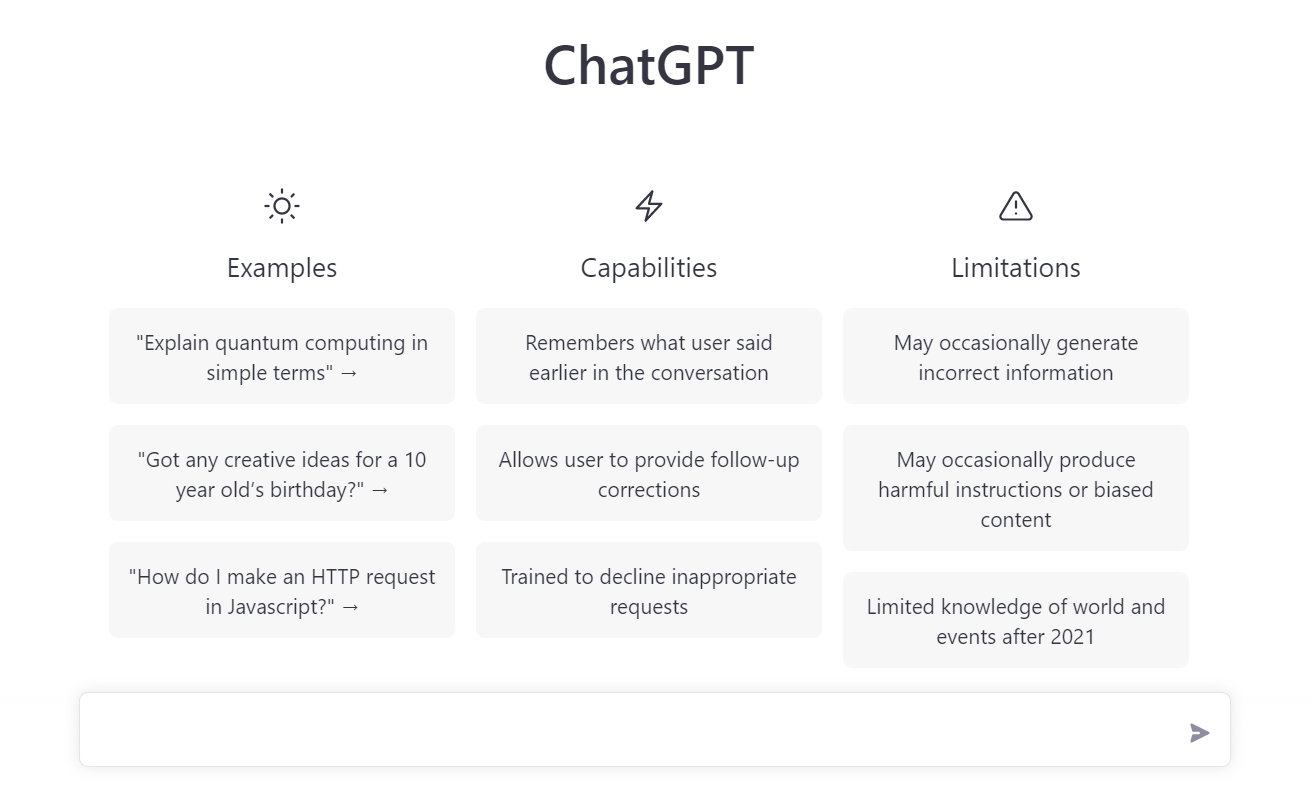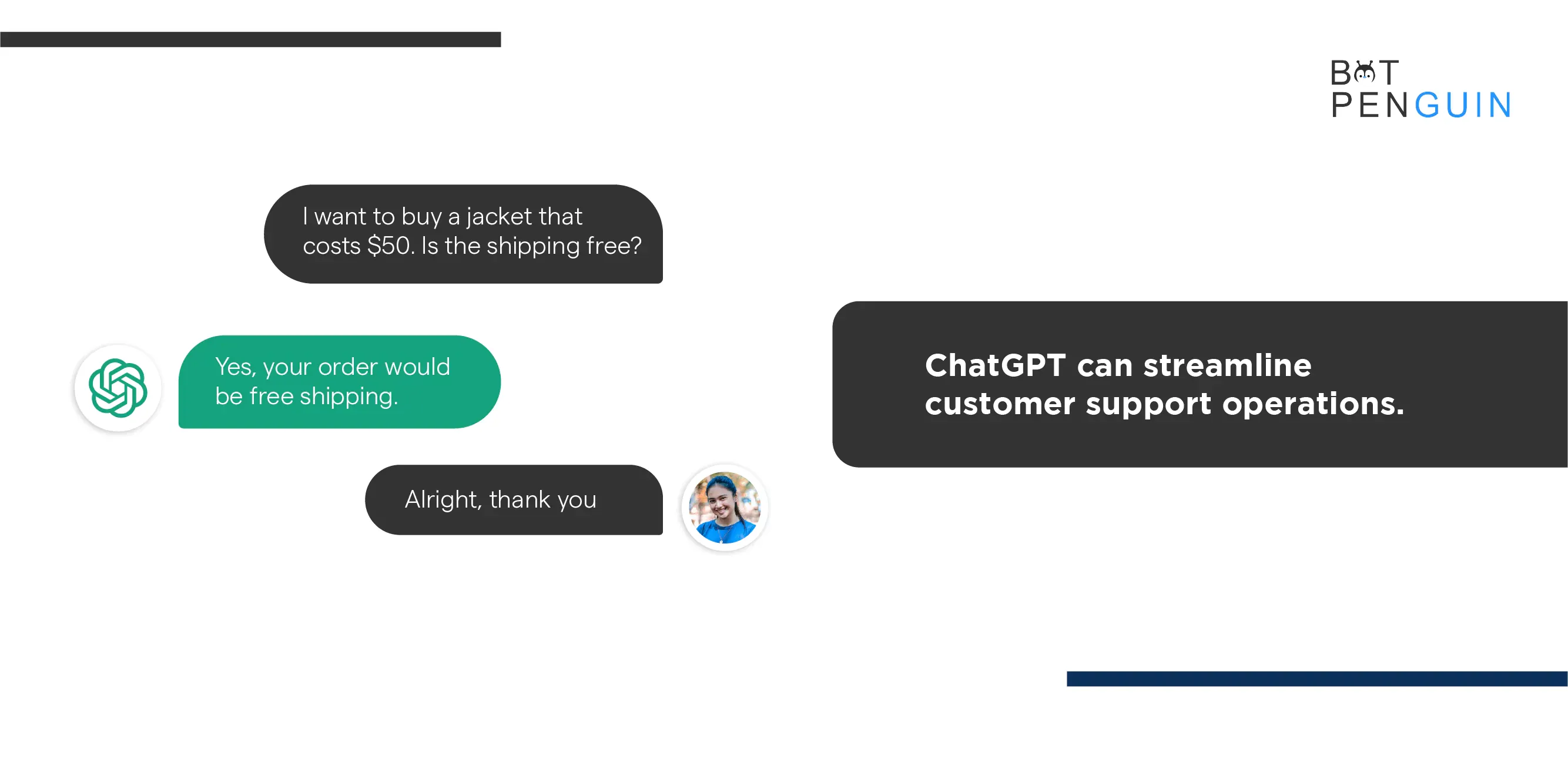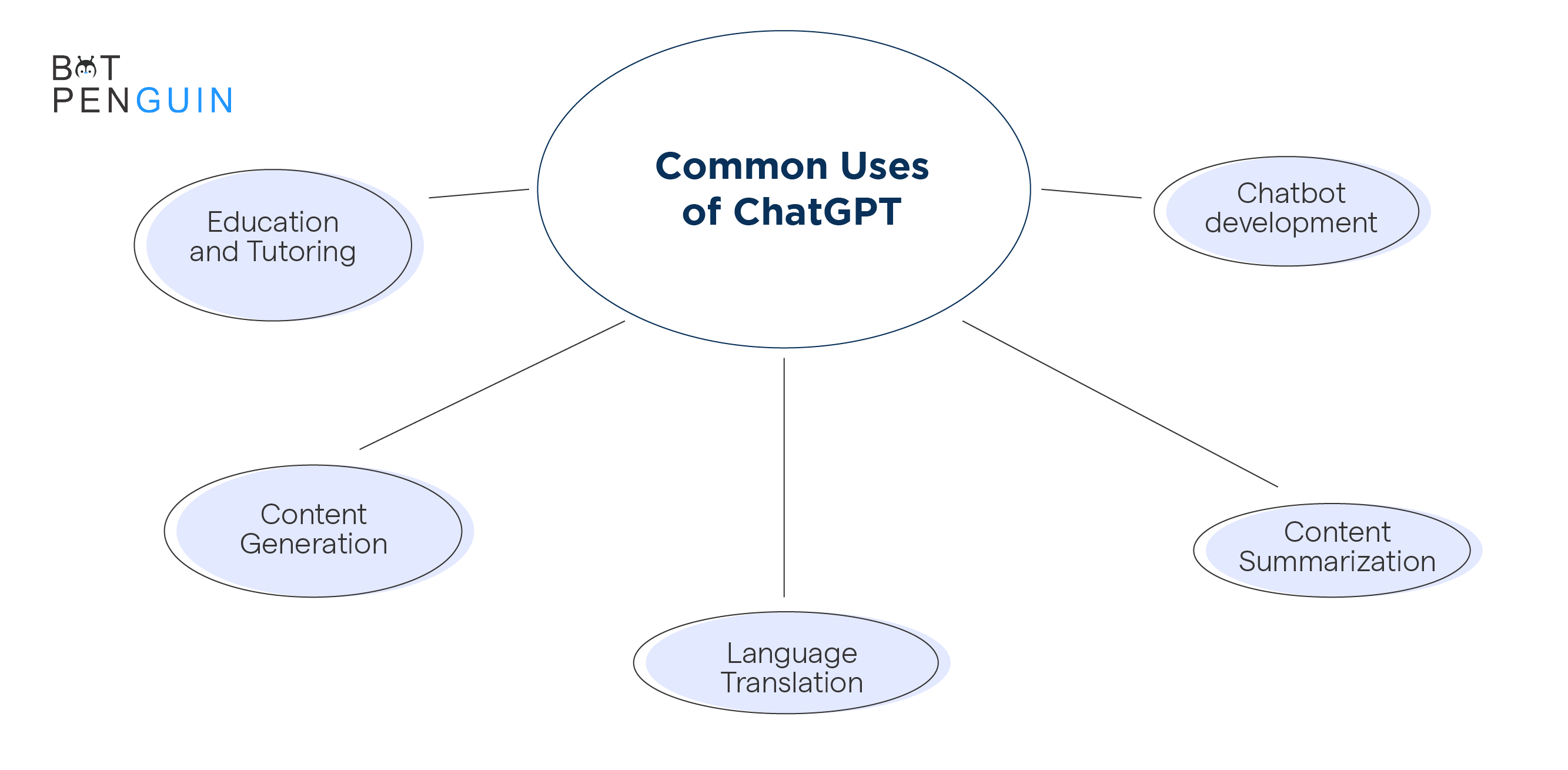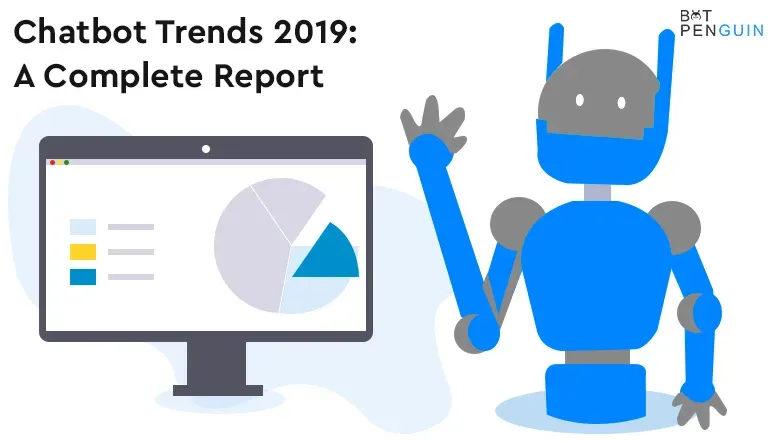With the rapid advancements in artificial intelligence (AI), a wide array of innovative applications, such as chatbots and AI-powered communication tools, has emerged.
OpenAI's new language model, ChatGPT, has been gaining buzz in recent discussions.
This article aims to explore and clarify whether ChatGPT is a chatbot, as well as discuss its significance, functionality, and role it plays in various industries.
Understanding ChatGPT
Before diving into the world of ChatGPT, it is essential to have a firm grasp of what this technology represents and how it functions. In this section, we will provide answers to the common questions surrounding ChatGPT and its underlying AI principles.
What is ChatGPT?

ChatGPT is a language model developed by OpenAI, based on the groundbreaking GPT-3 (Generative Pre-trained Transformer 3) architecture.
The core idea behind ChatGPT is the ability to generate contextually relevant human-like responses during conversations.
Unlike traditional chatbots that rely on pre-defined scripts or specific inputs, ChatGPT leverages AI to create a more natural and realistic conversation experience.
ChatGPT is capable of understanding the nuances of human language, including idiomatic expressions, sarcasm, and humor.
This allows for more engaging and personalized conversations, making ChatGPT an ideal tool for customer service, education, and entertainment.
How does ChatGPT work?
ChatGPT functions using a deep learning architecture that has been pre-trained on massive volumes of text data. This enables the model to learn grammar, facts, and reasoning abilities similar to those of humans.
When provided with text-based inputs, ChatGPT dynamically generates text in a context-aware manner, making the generated content feel more organic and coherent than traditional chatbot responses.
The level of text generation quality and flexibility is achieved through a combination of unsupervised learning, transfer learning, and fine-tuning techniques.
ChatGPT is constantly learning and improving based on the conversations it has with users. This means that the more it interacts with humans, the better it becomes at generating accurate and relevant responses.
Additionally, ChatGPT can be fine-tuned for specific tasks, such as customer support or language translation, making it a versatile tool for a wide range of applications.
The role of AI in ChatGPT
AI is a critical component of ChatGPT, as it allows the model to learn from data and make predictions. The GPT-3 architecture leverages powerful machine learning algorithms to dynamically understand the context and generate relevant content.
As a result, AI plays a pivotal role in providing ChatGPT with its unique capabilities, making it an essential element for smoother and more engaging communication experiences.
Furthermore, AI enables ChatGPT to adapt to different users and scenarios, making it an ideal tool for businesses and organizations looking to streamline their communication processes.
With ChatGPT, companies can provide their customers with 24/7 support, personalized recommendations, and real-time language translation, all while reducing costs and improving efficiency.
In conclusion, ChatGPT represents a significant advancement in the field of conversational AI, offering a more natural and engaging communication experience for users.
Its ability to generate contextually relevant responses and learn from data makes it a valuable tool for businesses, educators, and individuals alike.
Comparing ChatGPT to Traditional Chatbots
It is important to evaluate and compare ChatGPT against traditional chatbots to assess its strengths and weaknesses. This will provide insights into how ChatGPT can cater to various needs and applications, as well as the challenges it faces in comparison to existing chatbot technologies.

Key differences between ChatGPT and chatbots
While both ChatGPT and traditional chatbots are often used for text-based conversations, there are some notable differences between the two.
Traditional chatbots typically rely on rule-based systems, requiring developers to script specific responses for a wide range of inputs. This can result in limited and repetitive conversations.
On the other hand, ChatGPT learns from data and utilizes its contextual understanding to generate more fluid and relevant responses, making its conversations feel more natural.
Moreover, traditional chatbots are not capable of understanding the context of the conversation. They are programmed with a fixed set of responses and can only provide answers based on the keywords in the user's input.
This makes the conversation feel robotic and impersonal. ChatGPT, on the other hand, can understand the context of the conversation and generate responses that are more natural and relevant to the user's needs.
Advantages of ChatGPT over chatbots
There are several advantages to using ChatGPT as opposed to traditional chatbots. These include:
- More natural conversations
ChatGPT's ability to generate contextually relevant responses makes it easier for users to engage in complex, authentic conversations. This is particularly important for businesses that want to provide a personalized experience to their customers.
- Reduced development time
As ChatGPT learns from vast amounts of data, it does not require extensive scripting. This translates to reduced development effort and faster deployment times. This is a significant advantage for businesses that want to launch their chatbot quickly.
- Multi-domain adaptability
ChatGPT can be fine-tuned to generate content relevant to various domains, making it indispensable for a wide range of applications. This is particularly useful for businesses that operate in multiple domains and want to provide a seamless experience to their customers.
Limitations of ChatGPT compared to chatbots
Despite its advantages, ChatGPT also has some limitations when compared to traditional chatbots. These include:
- Less control over responses
As ChatGPT dynamically generates content based on context, it can sometimes produce outputs that may not align with a developer's intentions or a user's expectations. This can be a significant disadvantage for businesses that want to maintain control over the conversation.
- Higher computational resource requirements
Due to its more complex architecture, ChatGPT requires greater computational resources, which might make it less suitable for resource-constrained environments. This can be a problem for businesses that operate in areas with limited resources.
- Potential incoherence
Although ChatGPT can generate plausible responses, it can sometimes produce less coherent or incorrect information due to biases or inaccuracies in the training data. This can be a significant disadvantage for businesses that want to provide accurate information to their customers.
Overall, ChatGPT represents a significant advancement in the field of chatbots. Its ability to generate contextually relevant responses and its multi-domain adaptability make it an excellent choice for businesses that want to provide a personalized experience to their customers. However, its limitations must also be considered before implementing it in a business environment.
Applications of ChatGPT
ChatGPT is a powerful tool that can be used in various industries due to its advanced text-generation capabilities. Its versatility makes it an excellent candidate for a wide range of applications, and in this section, we will explore some common use cases that demonstrate its potential value in today's technology-driven world.

Customer service and support
ChatGPT's context-aware communication capabilities make it an ideal tool for enhancing customer service and support. By implementing ChatGPT as a support channel, businesses can provide faster, more accurate responses to customer queries, improving resolution times and increasing overall customer satisfaction.
For instance, imagine a customer who has a question about their recent purchase. With ChatGPT, the customer can quickly receive an accurate response to their query, without having to wait on hold or navigate through a complicated phone menu.
Additionally, ChatGPT can be trained to recognize common customer issues and provide solutions, reducing the workload of customer support agents and enabling them to focus on more complex issues.
Content creation and editing
ChatGPT's advanced text generation skills make it an excellent tool for creating or editing content for various styles and formats, such as blog posts, press releases, and social media updates.
For example, a content creator could use ChatGPT to generate ideas for blog posts or social media updates. By automating these tasks, content creators can save time and focus on more strategic aspects of their work. ChatGPT can also be used to edit existing content, ensuring that it is grammatically correct and free of errors.
Virtual assistants and personalization
Personalized virtual assistants powered by ChatGPT can deliver tailored experiences to end-users, enhancing the user experience for a wide range of applications, such as e-commerce platforms, mobile apps, and online services.
For instance, imagine a virtual assistant that can understand a user's preferences and provide personalized recommendations for products or services. This would not only enhance the user experience but also increase the likelihood of a sale.
Furthermore, ChatGPT can be used to create chatbots that can interact with users in a natural and engaging way. By leveraging ChatGPT's advanced text generation capabilities, chatbots can provide personalized responses to user queries, improving the overall user experience.
In conclusion, ChatGPT is a versatile and powerful tool that can be used in various industries to enhance customer service and support, automate content creation and editing, and deliver personalized experiences to end users.
Ethical Considerations and Challenges
As with all AI-driven technologies, ChatGPT comes with its own set of ethical implications and challenges. In this section, we will discuss some key concerns associated with ChatGPT and explore potential ways to address them.
Privacy concerns with ChatGPT
ChatGPT processes textual data to generate responses, which can result in potential privacy risks if the data contains sensitive information. To mitigate such risks, it is essential to employ strategies that protect user privacy, such as anonymizing data during conversations and implementing policies that govern data usage and storage.
Potential for misuse and abuse
ChatGPT's capabilities can be misused to generate deceptive or harmful content, such as fake news or cyberbullying. To curb such misuse, developers, and organizations should establish guidelines and implement monitoring frameworks to detect and prevent harmful applications of the technology.
Addressing biases in AI-generated content
Given that ChatGPT learns from vast amounts of data, it may inadvertently adopt biases present in the data. These biases can manifest in the form of skewed or offensive content. To address this issue, investing in research and development is crucial to reduce biases in AI training and fine-tuning processes while fostering an inclusive and ethical AI ecosystem.
TL;DR
In conclusion, ChatGPT represents a significant evolution from traditional chatbots, offering a more context-aware and engaging conversational experience.
Despite its limitations and ethical challenges, the advantages it brings to various applications and industries make it a valuable asset in the AI-driven innovation landscape.
By understanding its capabilities and addressing the inherent concerns, developers, organizations, and end-users can harness the full potential of ChatGPT to revolutionize how we communicate in the digital realm.
In these uncertain times, BotPenguin provides rock-solid support to enterprises and industry leaders looking to unleash AI possibilities. Hire their team of ChatGPT developers today.



